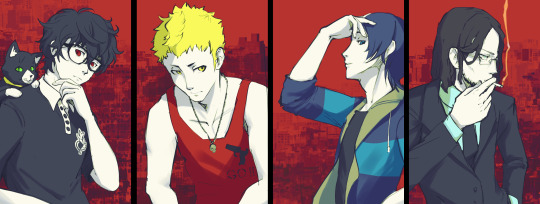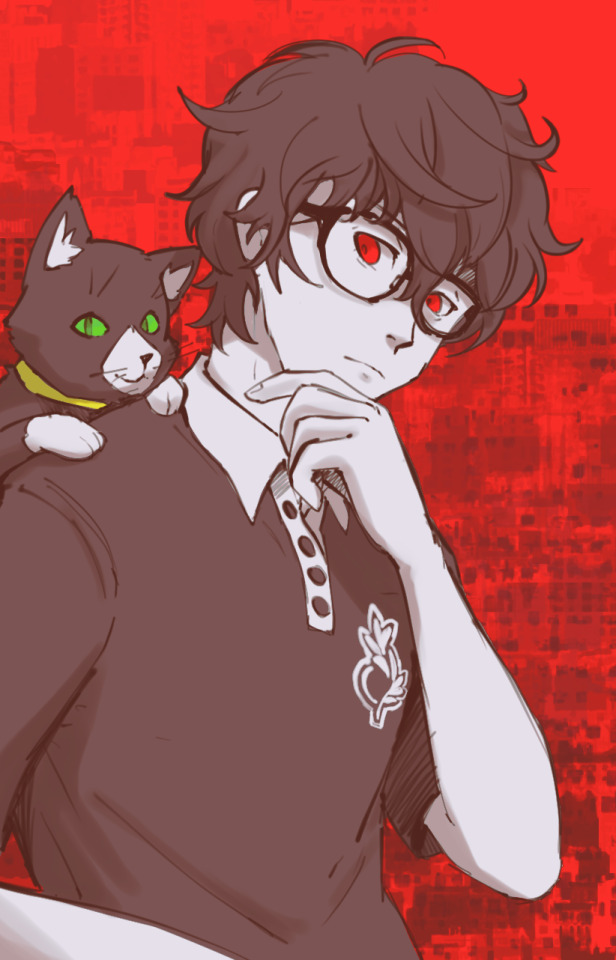she/they, ID/EN. drops by here once in a long while / peribawangStash on twitter
Don't wanna be here? Send us removal request.
Text
was cleaning my draft out and i just realized i have this. was supposed to be posted back then on february... oh well
(song: strikers (koei tecmo soundteam))
#persona 5#persona 5 strikers#zenkichi hasegawa#ren amamiya#akira kurusu#sophia p5#ramski ngepost gambar dia di tumblr riil min#i think this stayed in draft because my internet failed to upload it
114 notes
·
View notes
Text

Yo, what's with my copy of Persona Tactica?


#ah. dude this is sooo damn good#the anatomy is nailed down so well!#the flexibility/rubber look is also very natural!#and sophia's dress is done perfectly! puffy bottom but still has the tactica rubber arch#zenkichi's expression and pose is also very “official” to his personality.#sophia's eyes are also perfect!#gah i'm gushing so much over this. good job op!
433 notes
·
View notes
Text


BTW i bought the P5S physical artbook that came with the JP special edition (probably overpriced) just to scan the persona concept arts. mainly because i don't like the blurry look of the scans in the SMT fandom wiki and the EN artbook somehow omits these.
you can see the HD versions in the image links. there's 1 more concept under the cut for spoiler reasons i guess? if you've finished P5S, you surely know what persona it is.

23 notes
·
View notes
Text
Brief History of Nintendo in Southeast Asia
Little is known about the history of Nintendo in other regions of the Asia Pacific outside of Japan. We’ve seen how Nintendo and Hyundai teamed up to introduce the NES to the South Korean market as trade disputes and tensions persisted between Japan and South Korea in the 80s - leading to the subsequent Korean embargoes on Japanese goods at the time, and even all the shenanigans involving iQue in Mainland China introducing wacky Nintendo consoles such as the iQue Player to now become Nintendo’s de facto Chinese localization house for modern Nintendo games.
The story of Nintendo down in the Southeast Asia is just as niche as any other history of Nintendo in the Asia Pacific outside of its home country, and just as worthy to tell. We’re going to explore deep into the history of how the Big N attempted to enter the region over the decades.
THE DISTRIBUTORS
Nintendo products have been distributed in the region for longer than many people thought. A Kobe-based company called Active Boeki K.K. (アクティヴ貿易株式会社) is responsible for distributing Nintendo hardware and software in the Middle East and Southeast Asia. According to their outdated website, they’ve been distributing Nintendo games since the Game and Watch period, which basically means Nintendo’s semi-official presence in Southeast Asia started in the early 1980s.
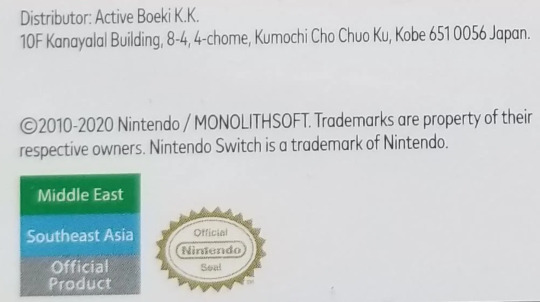
The back of a Southeast Asian packaging for Xenoblade Chronicles 2, showing Active Boeki’s address and status as a distributor.

Source: A shot from a Nintendo 64 Asian Version (Singapore-Malaysia-Indonesia Version) service manual. (Consolevariations.com)
Back in the 80s and 90s, Active Boeki’s Southeast Asian subsidiaries first mainly operated in the Malay-speaking regions of Singapore, Indonesia, and Malaysia. They had what seems to be three separate subsidiaries for each country: A. Active Pte. Ltd. for Singapore, PT. Active Exim Indo for Indonesia, and A-Active Sdn. Bhd. for Malaysia. Not only they’re responsible for distribution of Nintendo consoles and software in the region, but they’re also responsible for warranty and service for all the consoles sold in the region. They are responsible for importing consoles from the NES up until the Game Boy Advance SP, while skipping out on the GameCube for unknown reason.
During the NES and SNES era, there were two other distributors in Singapore responsible for importing consoles. One of which are Gan & Beng Trading Co., as well as Uptron Computer Pte. Ltd., which interestingly share a similarly close next-door address with Active Boeki’s Singaporean division, A. Active Pte. Ltd.


Source: (Top to bottom) The bottom part of an NES Asian version distributed by Gan & Beng in Singapore (Imgur), and a back of the manual for a Southeast Asian version of Super Mario Land. (Game Boy Database)
At some point around the early 2000s, all of these three Active Boeki subsidiaries have ceased to exist for unknown reasons. But according to the Singaporean ACRA listings, in 2004, Singaporean-based Maxsoft Pte. Ltd. was established, and it is now the new singular subsidiary representing Active Boeki responsible for distribution and events on all the three previous Southeast Asian countries, plus Thailand and the Philippines. Maxsoft is still around until today and they are responsible for distributing Nintendo consoles and software from the Wii and DS era up to the Nintendo Switch.

Despite covering five Southeast Asian countries in distribution, Maxsoft’s role in promoting, distributing and establishing service centers in Southeast Asia has been more directed towards Singapore. Many Singaporean Nintendo fans have complained about the lack of discounts and sales provided by the distributor.
Although times have changed, and Nintendo announced that it was opening official website and e-commerce stores in Singapore in October 2021, Thailand in December 2021, and Malaysia and the Philippines in February 2022. And with it came changes to the distributor channels as Active Boeki/Maxsoft is no longer the sole distributor in these countries, with Nintendo now working directly with local distributors on a per country basis.
Convergent Systems Pte. Ltd. are in charge of Singapore and Malaysia, VST-ECS is in charge of the Philippines, and Synnex is in charge of Thailand. All of these companies worked directly with Nintendo of Japan in not just distributing, but also establishing onsite events, promotion campaigns, providing customer support and service centers, as well as in charge of running official Nintendo-approved online store presences in e-commerce sites such as Lazada and Shopee in their respective countries. They have been doing a better job at doing promotion, events and sales than Maxsoft does, as Nintendo now has the flexibility of working directly with each Southeast Asian countries directly through a local distributor based in one country in charge of the region. This marked the end of Active Boeki/Maxsoft’s more than 35-year monopoly in Southeast Asia.




For some reason, Nintendo still has yet to work with a local Indonesian distributor to establish official online stores and launch an Indonesian-language Nintendo website. There’s a room for a lot of speculation over this, one of it being the tight regulations imposed by the Indonesian government on the video game industry recently, from things such as high import/customs taxes and Kominfo’s recent shenanigans.
The Indonesian government’s approach to the video game industry has been a mess of bureaucratic hurdles and rather antagonizing. A Kominfo spokesperson in October 2023 recently criticized how the local game industry loses a lot of money from what it calls “foreign video game sales” (despite Indonesian gamers have been paying an 11% VAT on game purchases made through Steam and even from local game stores). Kominfo has even threatened to ban games in Indonesia if they are not rated by the Indonesia Game Rating System (IGRS) and do not have an official subsidiary within their borders. This leads to Kominfo issuing a new ministerial law Kominfo Ministerial Regulation No. 2 2024 on Game Classification, regulating and revamping its game rating system and consequences for what they call “electronic system providers” (a legal way of calling Indonesian game companies and subsidiaries) had they refused to do so.
This prompted criticism from Indonesian game developers, with a notable criticism comes from Kris Antoni from Toge Production, the developers of Coffee Talk and the publisher for The Game Awards 2023 nominee A Space for the Unbound. He pointed out the complex bureaucratic process such as opening a private subsidiary as a foreign company, and concerns about conflict of interest between big multinational game companies and indies regarding local talent. All are reasonable concerns, not to mention the hurdles his company has to go through previously against the Indonesian customs on getting a clearance for their Switch devkit. Knowing the petty protectionist policies done on behalf of the Indonesian government, it’s understandable why companies have been giving fake promises, waiting, or avoiding from expanding their operations in Southeast Asia’s largest market. Time can only tell whether or not Nintendo will bite the bullet.
THE HISTORY OF THE CONSOLES
History of Nintendo in Southeast Asia began in the early 1980s. During this time period, the Game and Watch was first introduced to Indonesia through rental services in front of schools. These kiosks were available throughout major cities such as Jakarta, Bandung, and Surabaya, where schoolkids would pay them a reasonable fee for them to rent and enjoy these consoles on a short period of time. Game and Watch also entered Thailand around the same time period, but what is contrasting between these two countries is that many people actually own Game and Watch consoles in the mainland Southeast Asian country. Game and Watch consoles are often called as “Press Games” by early Thai gamers due to its gameplay mechanics.
youtube
Source: Escuadrat Indonesia on YouTube
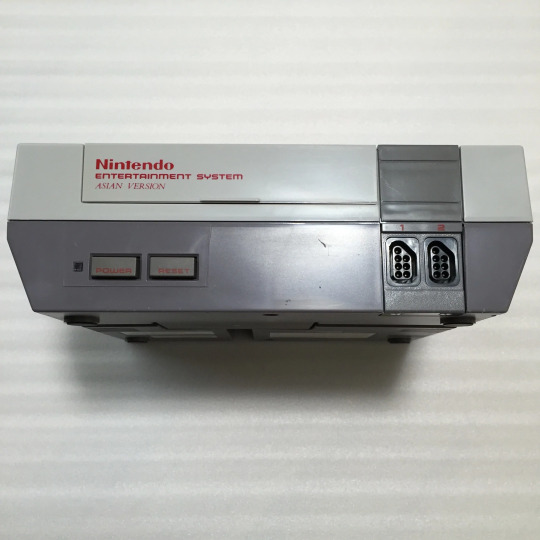
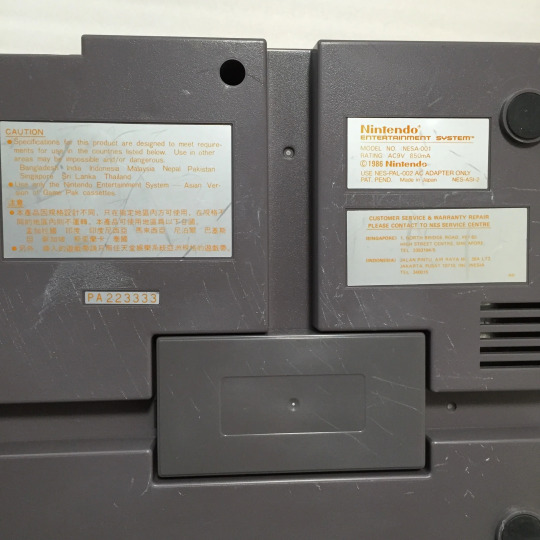
Source: RetroAsia.com (1), (2)
In 1986, Nintendo officially brought the Nintendo Entertainment System to the Southeast Asian market with the NES Asian Version. It looks similar as the one made for the Hong Kong market, as shown by the light grey-colored trim along the controller ports closer to the rest of the system’s upper hand body instead of black found in NES consoles sold in North America and Europe.
These consoles were made to play official Asian region PAL NES games, and the game boxes even have similar dimensions to other PAL games sold in Europe and Hong Kong.

Source: u/samiam1337ish on r/RetroGaming
It is not known the exact figures for MSRP on these consoles, but it was reportedly pretty costly for most Southeast Asians that only those who are wealthy enough can afford them, and those who can’t afford them plays them on their friend’s house who has one or visit in gray-market video game rental places that rents out Famicoms or NESes.
Some even opted out for bootleg multicarts and Famiclone consoles, and brands that gained enough traction in Southeast Asia are Spica, which even has their own official branch and service centers in Southeast Asia, including Indonesia.



Source: @/hallyvorc on Twitter (https://twitter.com/hallyvorc/status/1271482823245885440, https://twitter.com/hallyvorc/status/1271486620990967808)
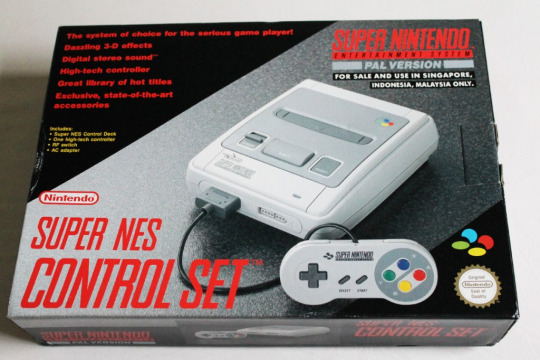

The Super Nintendo was launched in Southeast Asia in the 90s, and the region officially received a PAL SNES console that takes PAL SNES/Super Famicom-sized cartridges. But the existence of these PAL consoles presently is quite rare and are far off between, as North American SNES consoles are more prevalent and more common thanks to its larger cartridge slot size. Game stores would even trim the protective tabs out so that it can take PAL SNES/Super Famicom-sized cartridges - which is what most bootleg SNES game cartridges came in back in the days.
Unlike the NES, the Super Nintendo didn’t receive much influence in Southeast Asia as more people are more familiar with NES games more. But it was popular enough that there are more US SNES consoles for sale in multiple secondhand markets nowadays many years later. During this time period, the Game Boy also entered the region as well, although not much is heard about its history.

The box for the Southeast Asian version of the Nintendo 64. Notice the small block of text written in Traditional Chinese notifying that it is a Singaporean/Malaysian/Indonesian console from top to bottom. Guess Active Boeki forgot that Malaysia and Singapore use Simplified Chinese.
As we step into the Nintendo 64 era however, little is heard about Nintendo’s entry into 3D gaming in the region. Alongside the existence of the Game Boys, and the GameCube, mid-90s till 2000s gaming in the region is slowly becoming consumed by Sony’s entrance to the gaming market with the PlayStation. After the 1997 Asian financial crisis that hit the region, not much was heard of Nintendo until the Wii and DS eras, where these consoles are surely catching up against PlayStation and a rising PC gaming dominance of the time. During this time period, the Game Boy Color and Game Boy Advance hit the region as well - a perfect time as the late 90s also marked the beginning of the Pokemon fever throughout the region.

The box for a black RVL-101 Wii Family Edition released in Southeast Asia. Notice the “Malaysia/Singapore Official Product” seal on the top left of the packaging.
With the somewhat late release of the Nintendo Wii in the late-2000s in Southeast Asia, I think this is where we began to see a pattern of Maxsoft releasing US versions games and consoles for the region, ultimately making Southeast Asia a de facto region served under US/North America. This practice continues to be seen today, where you’d find so many Southeast Asian versions of Switch games with an ESRB rating system in many game stores across the region. Which we’ll talk more about later on.

The box art for the Southeast Asian version of Pokemon White for the Nintendo DS. Despite having a “UAE/Saudi Arabia/Malaysia/Singapore Official Product” sticker on the left, it carries an ESRB rating symbol and a US version of the game inside.
Nintendo’s potential for the Southeast Asian market grew during the Nintendo Switch era, where Maxsoft officially launched the console on March 3rd, 2017 - along with the rest of the world. Southeast Asian gamers complained about Maxsoft’s approach to the Switch preorder process, such as forcing the purchase of Zelda Breath of the Wild and 1-2 Switch! alongside the console, ultimately raising the price of the console in the region.
The Switch era proved to be a brand new, exciting chapter for Southeast Asia. During Nintendo’s November 2020 investor Q&A event, the company has seen a 152% rise in sales for what they call the “other” market, which encompasses Oceania, the rest of East Asia outside of Japan, and Southeast Asia. This report has convinced Furukawa to essentially expand their localization efforts in the Asia Pacific. And with the release of the new Super Mario Bros. Movie, in February 2024′s investor Q&A, Furukawa officially stated that the company was intending to expand into Southeast Asia, by introducing more people to Nintendo IPs via movies, mobile games, theme parks, and much more in the hopes to convince them to buy a Nintendo Switch.

Source: Escuadrat Indonesia on YouTube. The bottom side of the box for a Southeast Asian version of Nintendo Switch OLED Mario Red Edition. Notice the “ASI - For sale and use in Singapore” sign on the right and the text on the left that it comes with a European power plug. Wait, didn’t Malaysia and Singapore use a British power plug?
Alongside the launch of brand-new Nintendo distributors in Southeast Asia after some more than 35-years on a per-country basis as previously mentioned, Nintendo even announced that they are removing ESRB rating symbols from first party published Southeast Asian Switch game box arts starting in 2024. Which might seem as a weird decision, but it’s nothing new for the region as Sony has been releasing Southeast Asian PS4 and PS5 games in the region without the rating system for a decade now. Sources say that the main reason for this is for Nintendo to comply with Infocomm and Media Development Authority (IMDA), the Singaporean government media watchdog that also serves as the country’s game rating system, as G-rated games do not require having a rating symbol applied on the box art. For games rated ADV 16 and M18 however, require having a simple paper sticker slapped on the rating box that’s relatively easy to peel off.

The cover art for the rating-less Southeast Asian version of Paper Mario: The Thousand-Year Door remake.
At the same time, I would argue this move can also be seen as a fact that Southeast Asia does not have a unified regional-wide game rating system ala PEGI in Europe. So far, only Singapore and Indonesia are the only two countries in Southeast Asia with a working game rating system, and many countries in the region still needs to catch up with their rating system.

An image of a Southeast Asian version of Bayonetta 3 Trinity Masquerade Edition. Notice the IMDA M18 rating sticker on the bottom left of the packaging.
And I think that’s pretty much it about this brief history of Nintendo in Southeast Asia! I’m sure there’s much more to talk about, but this is primarily looking from an Indonesian Nintendo fan perspective and with the information that I know about, as information regarding SEA Nintendo seem to be pretty obscure out there on the internet.
The future for Southeast Asia and Nintendo while looking promising and is full of potential, don’t expect the existence of an official Nintendo Southeast Asia division in charge of promotion and localization ala Hong Kong and Korea, as I think Nintendo will have to think their strategy very thoroughly in the region before fully committing to that. As I’ve explained before in the NES part, console gaming regardless of platform, has always been accessible to mid-upper classes of Southeast Asian society due to its high entrance fee from buying the consoles and games alone in contrast to the average amount of income Southeast Asians make monthly.
This is the main reason why lately mobile gaming, and free-to-play games has taken the spotlight in the region due to its accessibility. And Nintendo knows this very well, as their strategy for Southeast Asia so far seems to attract people to Nintendo IP through movies and mobile gaming first in hopes that they could convince people to buy their consoles and games. Although I would argue the lack of regional pricing (which is pretty commonly seen in console gaming throughout the region), and the existence of a local Southeast Asian eShop using local currency and QR-based digital wallet payments that has been all the rage in the region would be a hindrance to promote Nintendo consoles to more parts of Southeast Asian society.
Time will only tell if Nintendo will fully commit themselves to it. In the meanwhile, this is where I’ll be wrapping things up. Expect more developments coming soon in the region.
Further reading:
Wolf, M. J. P. (2015). Video Games Around the World. In The MIT Press eBooks. The MIT Press. https://doi.org/10.7551/mitpress/9780262527163.001.0001
13 notes
·
View notes
Text
sorry for going out of the P5R context, but i want to say that this also happened with the P5S artbook. they don't cut too much fortunately, though TBF the original book was thin already, so... maybe it's not so minor, in terms of percentages
anyway! here's what's missing in the EN digital artbook, compared to the JP physical artbook that was part of the JP P5S special bundle! P5S spoilers, of course
if you've been to the SMT wiki of sophia, pithos, pandora, or valjean, you'd probably notice something: there are concept arts of how sophia uses pithos and the persona concept arts: pithos, pandora, and valjean. but you don't see this in the digital EN artbook... which makes my zenkichi blorbo self sad :(
so i decided to buy the book with whatever listing there was left and scanned them in a sharper graphic, as best as i could (i'm not an archivist LOL...). it makes me so happy to see the valjean concept art in HD...... anyway here is it, since there isn't many of them! you can see the HD version in megaten wiki (click the texts, can't copy-paste it somehow): pithos, pandora, valjean (the rest aren't uploaded to megaten wiki)




maybe there's a bit more, but i have to crosscheck the digital artbook hehe sorry. i hope all persona artbooks in the future don't have omitted contents between JP-inter, provide commentaries AND iteration sketches!!! hehe ok thank byeee
Okay I've got beef with the Persona 5 Royal Art Book and need to yell about it.

Specifically about how much Royal content Udon cut out, and how much of a damn rip-off it is for fans.
To add context, I'm someone who has all three of the physical P5 game artbooks:
The 2017 version by Prima Games ($39.99 USD initial seller price)

The Japanese Royal Artbook (3,520 yen initial seller price, which is about roughly $24 USD as of this post)
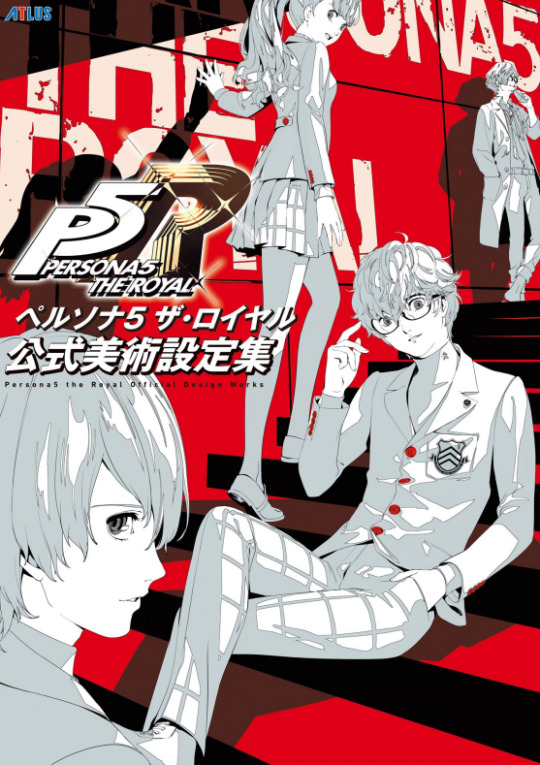
And this one by Udon ($73.40 USD initial seller price)
So is this a karen-esque rant about how I "wasted money just to see pictures I already paid for?" No, far from it. I knew what I was buying.
... At least, I thought I knew what I was buying.
My reasons for purchasing the Udon artbook was to see the Royal content translated. The creator's commentary, the "about" section for Kasumi, the interviews, etc.
What I instead got was... This.


That tiny slither of pages underneath that paper bookmark (or on the right side of my finger)? That's what made it into the Udon artbook.
The book next to it? The Japanese Royal artbook.
So much got cut out for the royal section... Actually let's get into the specifics:
So first off we've got the index page itself:
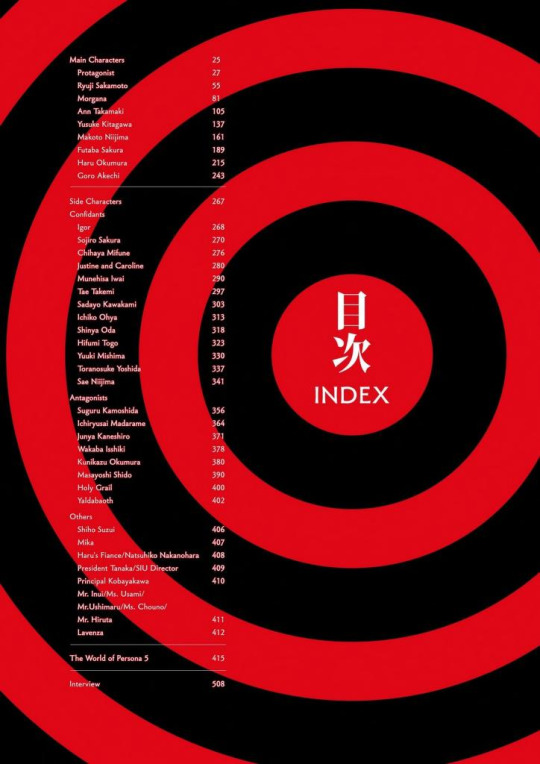
Er, ahem. Wrong one. Sorry about that. Here's the index page in the Udon artbook:

Yeah. That first index? That's from the Kadokawa e-book artbook (about $14.52 USD as of typing this post), which I didn't mention earlier by virtue of the fact that it's, well, an e-book. This version by Udon is technically its physical release (though it wasn't promoted as such), just with "extra" Royal content.
So we're already off to a great start. 👍✨️
All of the pages in the Udon artbook are exactly 1:1 with Kadokawa's (bar some ridiculous choices in art page placements all over the book), even to the point where Udon has to actually credit them as well (hidden all the way on the back of the last page):

So it's literally just slapping an Udon label on top of it, and charging the same price as what scalpers are currently asking for with the Prima Games artbook.
Again... Off to a great start... 👍✨️
Let's talk about the Royal section itself, since that's the part I was harping on about initially (and probably what most of y'all are curious about anyhow).
Well, in the Japanese Royal artbook, we've got some snazzy pieces of Joker and Raoul, as well as 3D models of his Third Sem outfits, and sketches of the two:

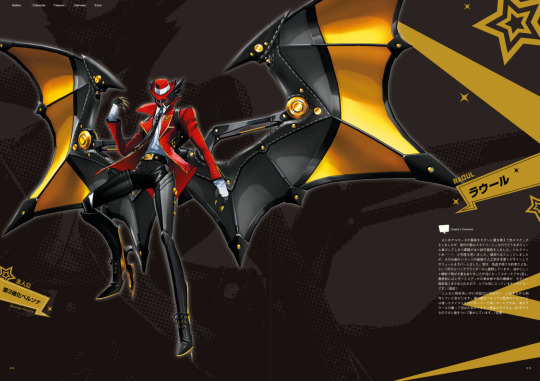
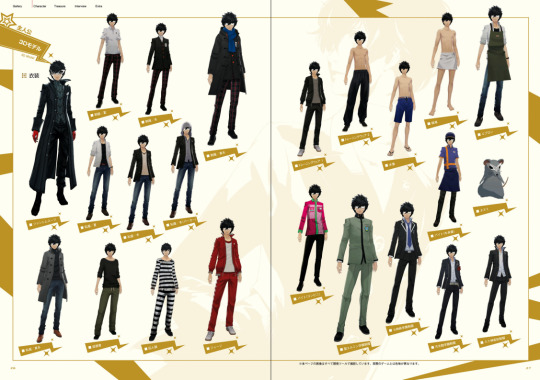
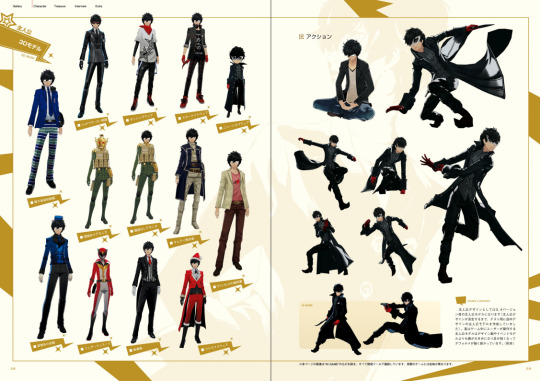
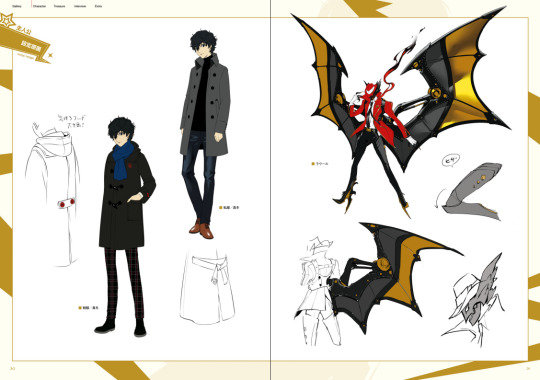
All in all, a really cool section for him, and the Royal artbook operates under the impression that fans already might own the Vanilla P5 artbook. So no repeat content, this is all brand new for Royal.
The Udon artbook however?

... That's it. That's literally it.
"Surely there's more on the next page, right?"
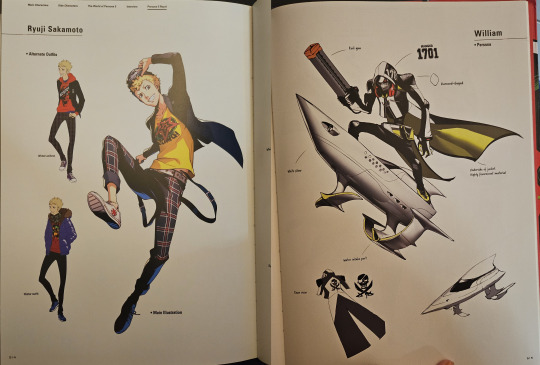
Nope. Next page is Ryuji, followed by his Third Tier Persona, and that repeats for everyone else.
Everyone... Except for Joker, Sumi, and Akechi. There is no Raoul, Ella, or Hereward in the Udon artbook.
And speaking of Akechi:

No Loki here, either. Udon literally slaps in the ONE persona Akechi does not use during Third Semester.
Though I suppose in Udon's case, this goof-up makes sense because Robin Hood is shown in the Japanese Royal artbook as well.
... To explain Hereward. Because they cut Hereward out entirely though, it just looks like someone slapped images together without having actually played Royal (much less gotten to Shido's arc in Vanilla).
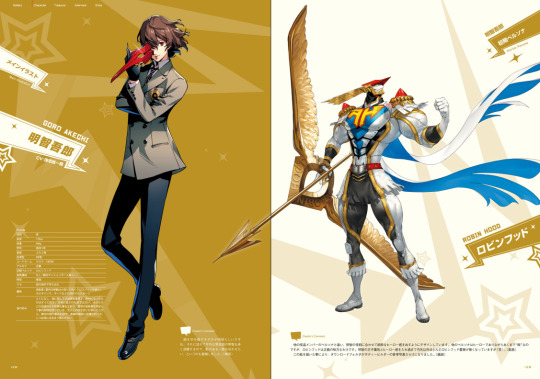
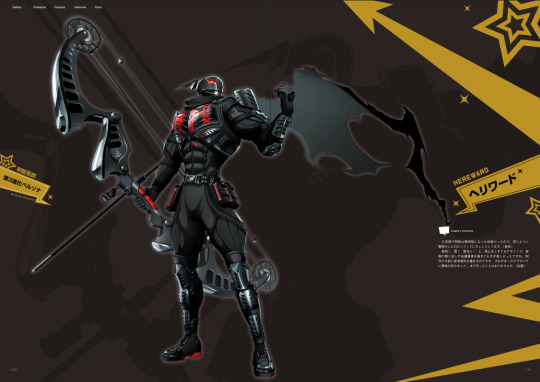
And of course, go figure, no Black Mask refs either. The closest we get is the JP Royal artbook with 3D models and sprites, but... Alas, we're still stuck with the P5A artbook being the only ref for him.
Now let's go straight to Sumi herself because my god did she get shafted...
Japanese Royal Artbook:


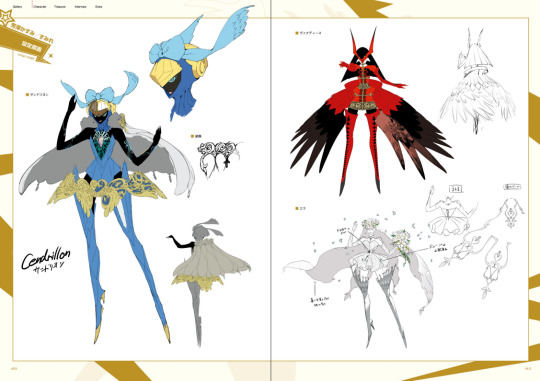
As well as 10 pages of her 3D model and sprites in different outfits or expressions as well.
... Udon Artbook:

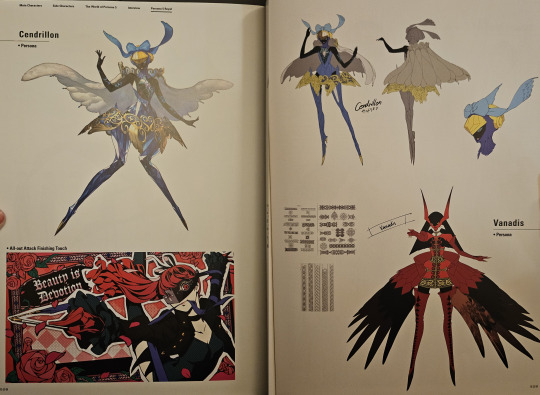
And that is it.
And that's not even getting straight to Maruki because suprisingly? He got done even dirtier than Joker somehow.
In the Royal Artbook, he has 12 pages all to himself, most of which admittedly is also 3D models and sprites, but he has various concept sketches as well:


In the Udon Artbook?

Half a page. Seriously. This is all both he and José get in the Udon artbook. No Azathoth or Adam Kadmon in sight, nor either his palace ruler or metaverse outfits. Even for "avoiding spoilers reasons," they couldn't be bothered to add his casual outfits either.
And lastly... The interviews. My god the interviews.
So when I had bought the Udon artbook, I was really hoping these interviews would've gotten translated (there's 17 pages of this, but alas Tumblr's image cap is being a butt):
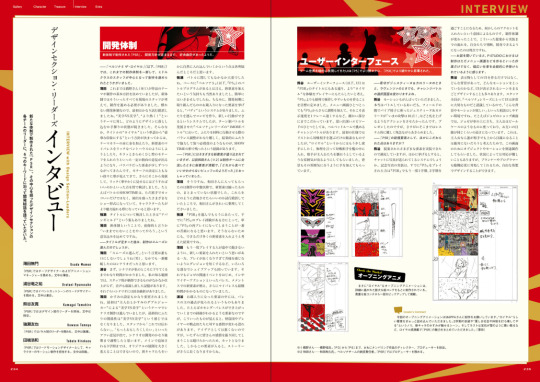
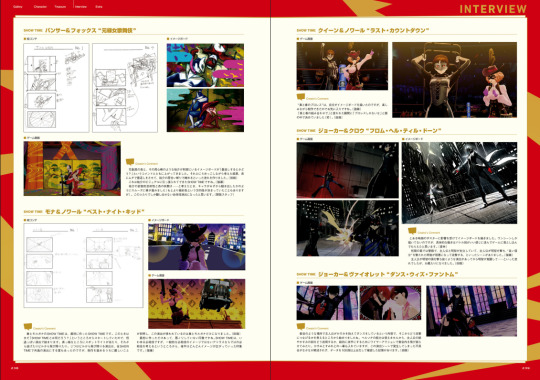
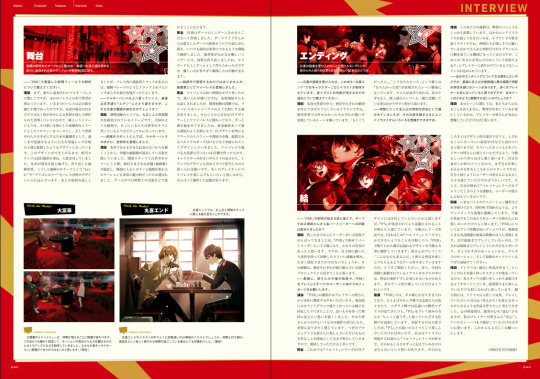
What we got instead?

... Just the interview responses about Vanilla P5 from the Kadokawa e-book. That's it. None of the Royal interviews got translated.
Would I recommend this artbook to anyone?
It honestly depends.
The Kadokawa artbook has content that was missing in the Prima Games version, so it is more faithful to the original Japanese release.
If you don't already have the Prima Games artbook, and are looking for a "definitive Vanilla P5 artbook," I'd definitely recommend the Kadokawa version in favor of it.
... But as far as physical releases, though? That's where I'm torn, purely because of the price point (and how much of a markup it is compared to prior releases, as well as JRPG artbooks in general), and the sheer lack of Royal content that does not make doubling the cost worth it.
So much of it is cut that overseas fans are unfortunately forced to purchase the Japanese Royal artbook on top of this one just to have a "full experience" of sorts, and that's roughly $100+ USD purely because Udon was too lazy to bother translating with Royal (which is in their right as a publisher) and half-assed it for obvious profit.
At this point, you really have to ask yourself if breaking your wallet for a tangible medium instead of a digital one is worth it personally.
But hey, Persona 5 fans will buy anything, no matter the quality, amiright? 🫠
(I was already burnt out by all the overpiced, lazy products/partnerships from last year staring at you Bisoulovely, you are not worth twice the cost as Eterno Recit or Artemis Kings for half the effort, I just want quality control back man...)
97 notes
·
View notes
Text
BTW i was offered a booth space at comifuro!!! i hope i can sell zenkichi hasegawa merchs (and maruki or just P5S/P5T in general) there! i'm going to be the change i want to see!
1 note
·
View note
Text

i feel like it's not discussed enough how akechi underestimates the PT because he attributes all of their accomplishments to joker so i had to get this off my chest
#THIS is the kind of joker-akechi dynamic i LOVE.#the joker that isn't all-ride-or-die for akechi and still puts his teammates on the same priority#and for akechi to learn a thing or two from him#oomf rocks
310 notes
·
View notes
Text
notes 365+: selip pesan ke gambar
jadi kan ini udah setahun lebih dikit sejak pertama kali kerja gambar-gambar editorial... kebetulan juga barengan sama masa-masa banyak yang gambar aktivisme/protes (at least di twitter). jadi pengen nulis dikit soal notes/stuffs yang kupelajarin aja...
tentu ini gak definitif dan bisa berubah lagi karena belajar gak ada habisnya, aku juga gak ngerasa kalo ini macem "godly tips gweh yang paling bener sejagat raya" tapi i think some people would be interested karena alasan di atas????? yea also i just like to yap so oof
intensitas pesan: yang aku baru ngeh dari ngegambar editorial komersil & nonkomersil (biasanya buat protes, atau emang temanya agak absurd, kayak seri metaphora/bunuh-bunuhan politikus), semakin frontal penggambaran dan penyampaian pesan, biasanya semakin kuat emosinya. mungkin karena pemrosesannya simbolismenya lebih singkat, berhubung sifatnya frontal. gak berarti gambar yang gak frontal gak bisa punya emosi yang sama kuat dengan yang frontal (diomongin di poin 2) ya. tapi misal, dari observasi bandingin gambar protes Indonesia Gelap sama gambar editorial umum, gambar protes biasanya mengandung elemen darah, kekerasan, dsb.. editorial umum cenderung lebih halus, biasanya karen ada kode etik jurnalistik & taking precautions aja. di awal-awal kerja, aku pernah ngajuin gambar yang ada elemen tusuk-tusukannya, tapi ditolak bos WKWKWK, suruh perhalus lagi...
frontalitas ≠ intensitas: tergantung topik, mungkin frontalitas pesan gambar harus dikurangin. frontalitas, bukan intensitas ya. ini mostly dapet dari ngikut campaign bootcampnya remotivi yang ganti gambar kekerasan seksual. berhubung temanya sensitif, jadi gambar sifat frontal biasanya dihindarin karenabisa jadi traumatik, berhubung kita gak bisa kontrol reaksi orang (ini juga penting, secara umum). nah untuk bedanya, coba liat gambar aiko yoshina ini, kebetulan masuk ke pameran campaignnya. pas sesi talkshow pameran, salah satu narsumnya yang penyintas KS bilang ini gambar yang paling memorable buat dia karena emosinya dapet – alias intensitasnya tetep ada. menurutnya, gambar ini ngegambarin banget emosi yang dirasaiin penyintas, yang harapannya juga bisa sampai ke nonpenyintas yang gak bisa tahu langsung rasanya kayak apa. contoh lain ngurangin frontalitas tanpa harus ngorbanin pesan yang mau disampaiin ada tweet soal sampul the saturday evening oleh norman rockwell. bisa dipake kalo misal kalian belom terlalu berani buat gambar sesuatu yang agak frontal dan mau lebih delicate. gambar sesuatu yang intens juga gak selalu harus tentang peristiwanya, bisa juga tentang gimana penyintas melawannya (liat tweet ini). jadinya gak mojokkin penyintas (terutama karena temanya protes), tapi dukung mereka gituh.
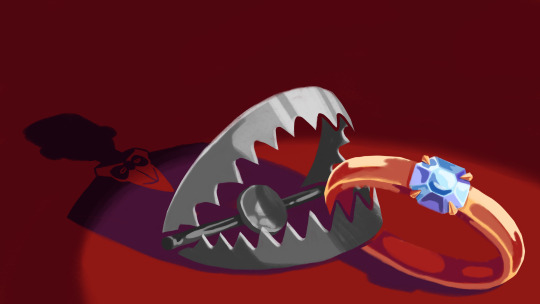
artstyle gak terlalu ngaruh, the more the merrier: ini gak terlalu berhubungan sama alasan kenapa aku nulis ini sih, tapi kadang suka ngeliat orang yang khawatir soal art style di twitter. so i'll put some samples of ilustrator editorial lokal yang bisa patahin stigma kalo gambar harus punya 1 style tertentu. ilustrator sampul tempo, kendra paramita, itu punya lebih dari 1 style – dari yang polos kartun sampe yang painting realis (liat gambar brigadir VS ali sadikin di sampulnya). so far aku pribadi lebih kerasa karena tergantung aja waktu pengerjaannya berapa lama, sama tema/konsep gambarnya gimana. yang stylenya gak realis/karikatur, tapi bahas topik politik? juga ada sih, misal nina & riizky di jawa pos (kayaknya nama lengkapnya masing-masing isnina aryani hasanah & rizky agung, kalo liat daftar redaksi). stylenya nina agak ke buku anak-anak, sementara rizky manga.

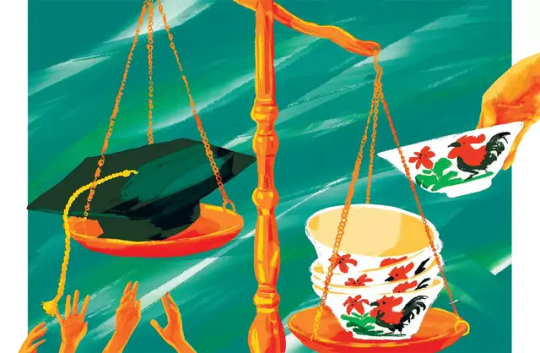
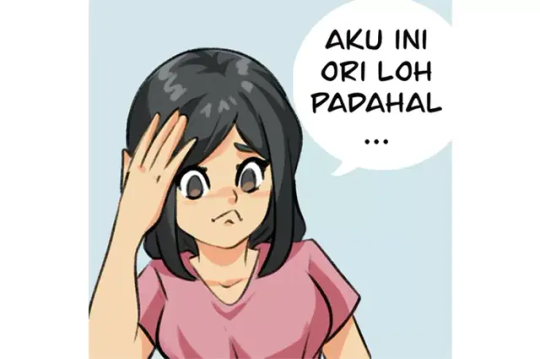
relatability ke kehidupan sehari-hari: gak otomatis memperbagus gambar, tapi IMO ini bisa nambah "koneksi" penikmat gambar ke pesan gambarnya tergantung cara pake. still about kendra – aku suka cover ini. ketika dikasih brief "saling kunci kursi menteri", aku pribadi kepikirannya ya... kursi diborgol. some others probably would think the same. alih-alih pakai metafora yang, it works, tapi juga agak "emangnya kita bakal pernah liat kursi diborgol IRL?" kendra bikin metafora yang rasanya lebih dekat ke keseharian karena lebih mungkin ngebayanginnya kejadian: orang pergang bagian-bagian kursi (OK still weird to see that IRL, tapi at least bisa kebayang tukang bawa bagian kursi kalo lagi bikin kursi). kinda hard to explain, tapi kadang aku pribadi ngerasa kadang gambarnya jadi agak "tacky" kalo metaforanya terlalu "fantasi"... sama lebih jenaka & bisa memorable aja kalo nyambung ke keseharian? contoh lainnya cover tenang, ibu sudah di sini. ngetandem motor yang sein kanan belok kiri itu khas indonesia banget, jadi ada koneksi "bonus" antar pesan dan pengamat.


kayaknya ini aja dulu, yang masih terkait sama ruang lingkup twitter & gambar protes-protesan. panjang banget... well happy drawink dan tetap manyala ges
EDIT: lupa selipin link twitter yang norman rockwell, sudah ditambahin ya. MAAF WKWKWK
#indopol#err gak indopol banget sih... tapi emang mainly nulis ini karena banyak gambar perpolitikan/gambar buat protes aja
7 notes
·
View notes
Text
what if zenkichi hasegawa zine
#zenkichi hasegawa#persona 5#persona 5 strikers#idk#i posted this on twitter and it got 5 people reeled in LOL
27 notes
·
View notes
Text


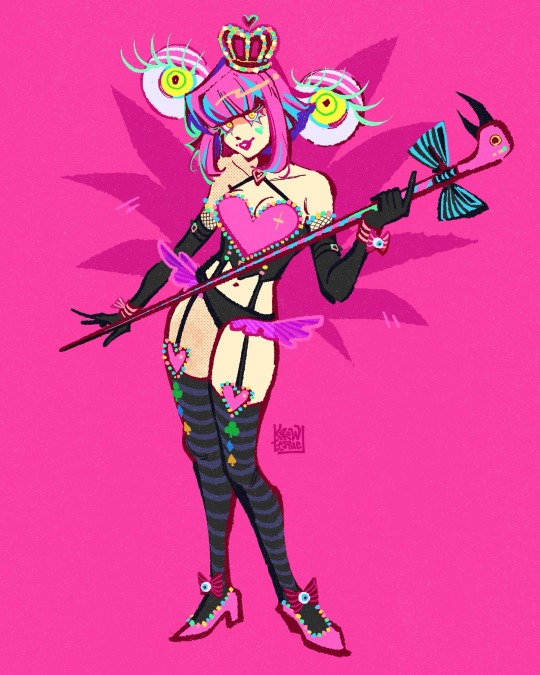
strikers doodles! i can’t believe they put me in persona
986 notes
·
View notes
Text
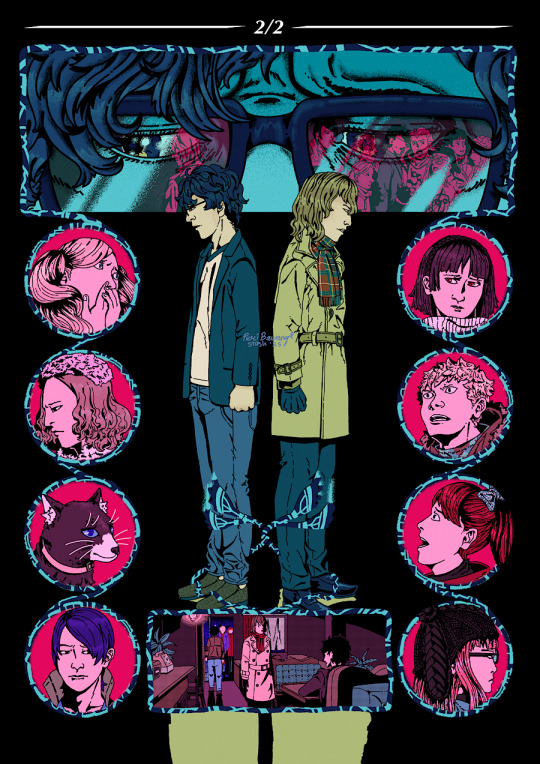
proposing some kind of alternate 2/2, where the thieves decided to check on joker just to make sure he's not tempted by maruki's deal, barged in to the cafe, and found out that akechi's life on limbo. more in cut
so if you ask me, i actually enjoyed their rivalry relationship a lot! but i also think it's placed in an awkward situation: the thieves don't hate him, especially because he wasn't fully at fault, but also i'm sure some of them will hold grudge or mixed feelings about him (and i think this bleeds into the writers too*). or in case of royal trio (which interactions i also enjoyed, but have a catch:), it's kinda funny how sumire doesn't actually know what happened to akechi in depth.
it makes sense for their relationship to be more "secluded/secretive" from the team, but also this is why i find it to be rocky if their relationship continue further, be it platonic or romantic, whatever you prefer. i can't imagine how will futaba feel if she found out, for example – given how much she seems to not care much about akechi**. and the game (understandably, for pacing reasons) keeps on avoiding to explore the nuance of akechi-joker's relationship effects deeper in the game.
the concept is not only for joker to be even more torn seeing his friends arguing & akechi's fate, but also to see the polarization among the thieves, akechi being conflicted between disgusted and teammate care (boiler room but worse?), and maruki regretting seeing that he's not making things any better or easier for everyone, especially joker (hoo may be interesting to see how the thieves feel about maruki too after this).
well, i still wish for a P5RST game that reunites them all, one of them because i want this to be explored..... oh well. i know his arc has a closure already, but... yeah. i'm honestly more of a platonic akeshuake guy because of this (i've also always been a platonic guy in general, though), but i also don't like the crowd who thinks the PT hates him and thinks they only see them as a killer. and i think resolving the awkward situation between the PT and akechi could make more players open up about the dynamics between them that can be explored, instead of being stuck thinking the extremes.
* a prominent example of this was ryuji. ryuji brought up akechi a lot as one of the reasons upon confronting shido (he even banged the boiler room door), but then said "uh it was for joker" when akechi thanked them for taking shido down in 3rd semester mementos. while i think this is possibly because ryuji has a bigger affinity for joker because well, he's the team leader, close friend, and akechi is still at wrong, i thought it was a bit... backlashy tone wise? i was under the assumption that he did it both for akechi and especially joker, but the mementos dialog made it sound like he only did it for joker. just felt kinda rough in showing the nuance on how he feels.
** like the talk when they all found out the effects of maruki's reality wearing off. when the topic was about realizing akechi "dies" once again, she ignored it and brought up about her mother instead. though, i think this is still more of the consistent examples in writing how each thieves feel about akechi. she has always been bringing up about her mother more often in shido arc, while still can understand where akechi came from.
#persona 5#persona 5 royal#ren amamiya#akira kurusu#p5r#ramski ngepost gambar dia di tumblr riil min#man tumblr needs superscript and subscript support so bad#or at least footnote support
89 notes
·
View notes
Text

my main account's persona side died, so i did some doodles about the P5S P5T characters during 3rd semester
toshiro's unaffected, i think, either because he has erina or salmael has preoccupied his cognition space
#persona 5#persona 5 strikers#persona 5 tactica#zenkichi hasegawa#toshiro kasukabe#kuon ichinose#akira konoe#eri natsuhara#ramski ngepost gambar dia di tumblr riil min
67 notes
·
View notes
